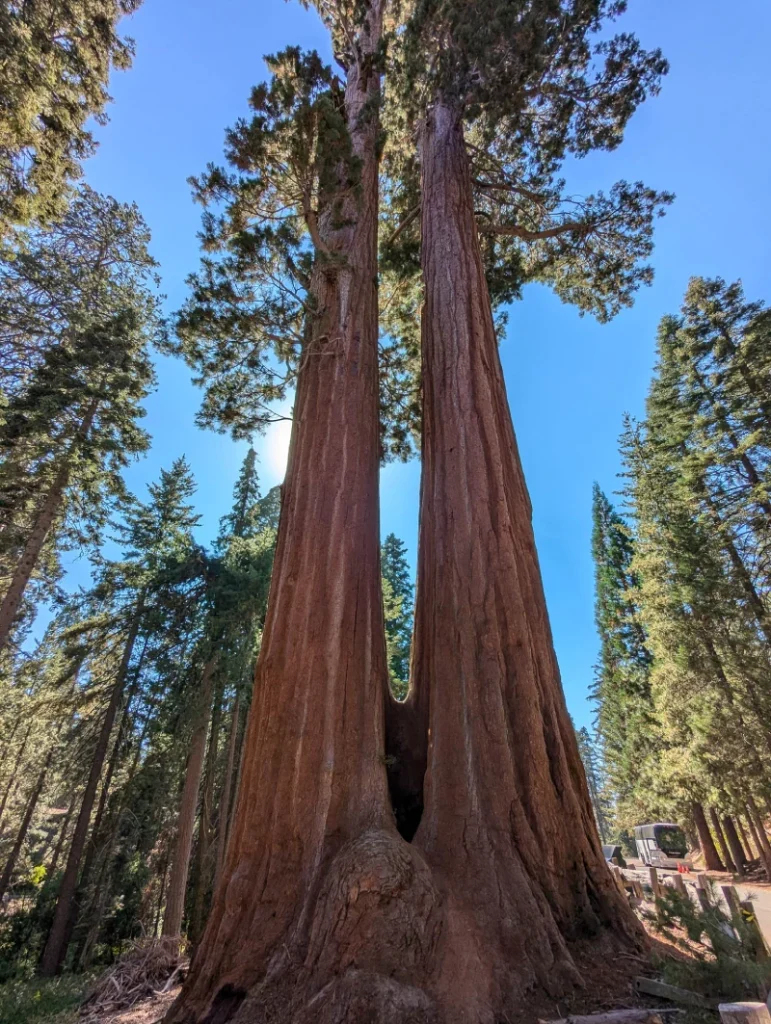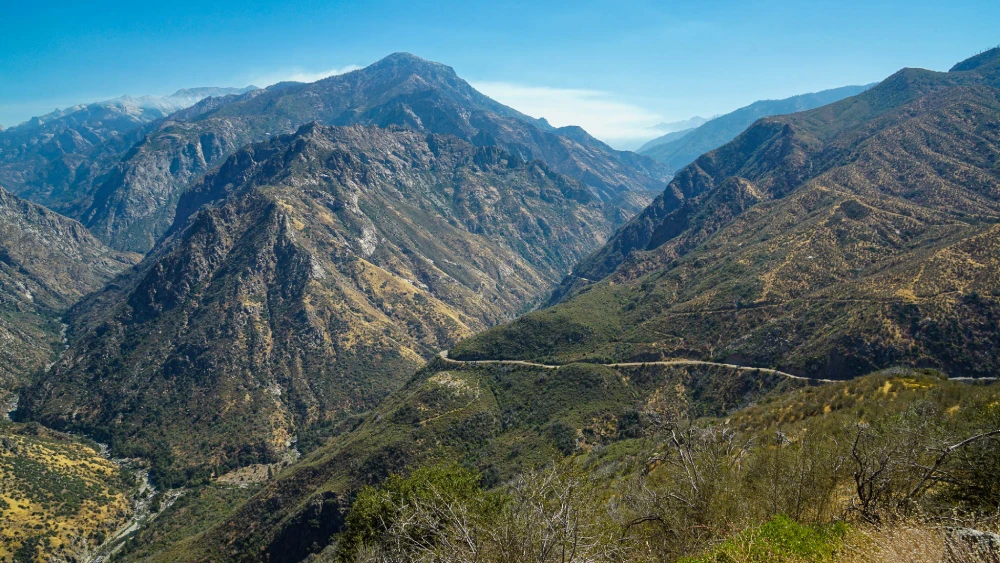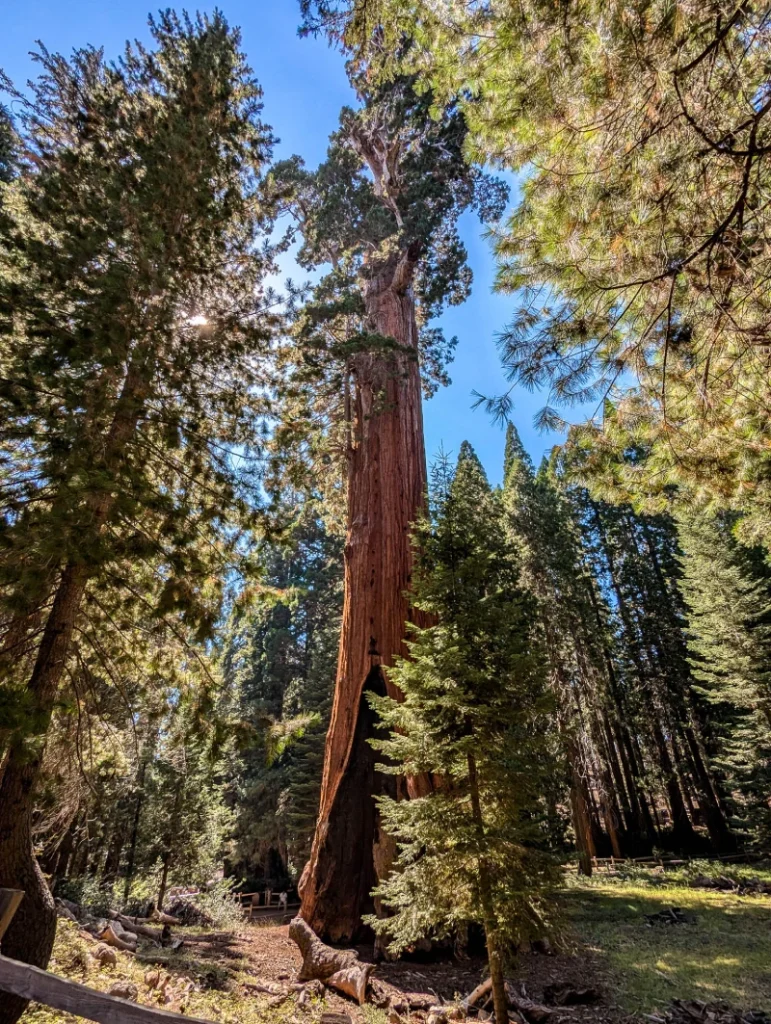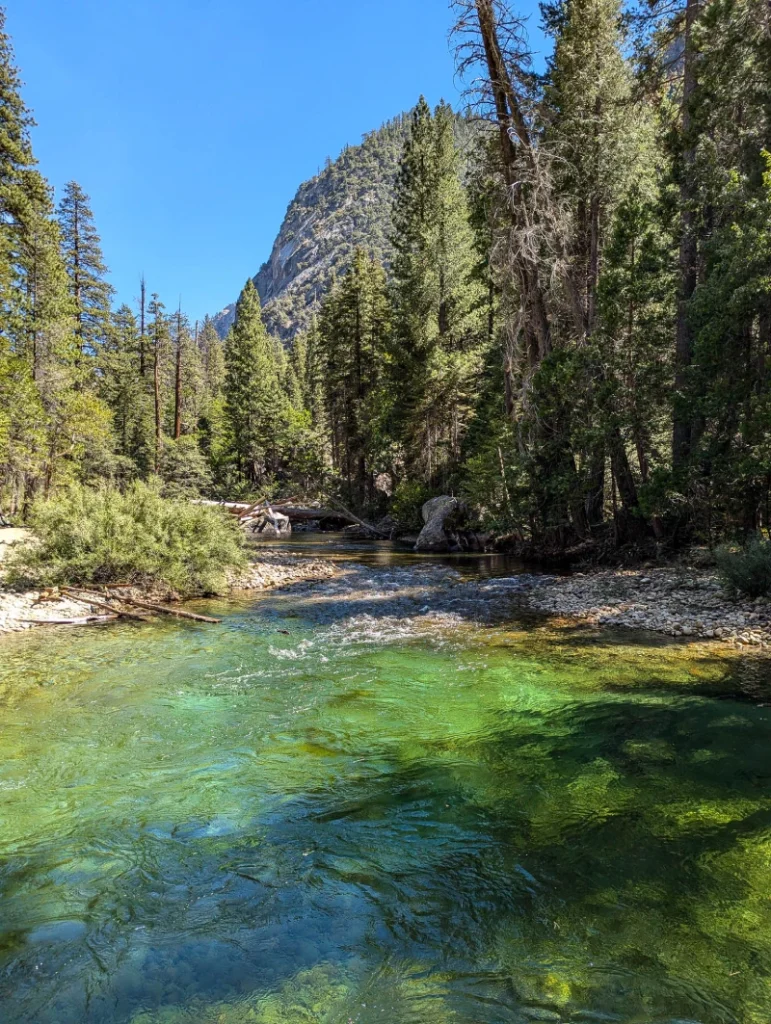
The Ultimate Guide to Visiting Sequoia and Kings Canyon National Parks
Last Updated on August 20, 2025 by Polly Dimitrova
If you’re dreaming of an adventure filled with giant sequoias, rugged wilderness, and breathtaking mountain views, visiting Sequoia and Kings Canyon National Parks should be at the top of your list. These two parks sit side by side in California’s Sierra Nevada and together create one of the most diverse and spectacular destinations in the U.S.
What makes them truly unique is that you can explore two national parks in one trip. Sequoia National Park is famous for its towering groves of giant sequoia trees, including the world-famous General Sherman Tree, while Kings Canyon National Park is an underrated gem known for its dramatic canyon walls, peaceful meadows, and far fewer crowds.
Whether you’re planning a quick getaway or a weeklong family trip, this guide to Sequoia and Kings Canyon will help you plan the perfect visit — from the best time to go and how much time you need, to must-see highlights, lodging tips, and insider advice for making the most of your trip.
Visiting Sequoia National Park
Sequoia National Park is home to some of the most awe-inspiring natural wonders in the world — the giant sequoias. Walking among these ancient trees, some over 3,000 years old, is a humbling experience. The park’s most famous resident, the General Sherman Tree, holds the title of the largest tree on Earth by volume.
Beyond the trees, Sequoia offers alpine meadows, granite domes, and rugged wilderness that stretches deep into the Sierra Nevada. Climb the steps of Moro Rock for sweeping views or wander the lush Crescent Meadow. While many visitors come just to see the big trees, the park’s variety of landscapes — from foothills to high peaks — make it a place to return to again and again.
Visiting Kings Canyon National Park
Often overshadowed by its neighbor Sequoia, Kings Canyon is one of the most underrated national parks in the U.S. — and also one of my personal favorites. Many travelers only stop here because it is right next to Sequoia and more easily accessible, but if you venture deeper past the Kings Canyon Scenic Byway — which in itself is absolutely stunning — you will discover so much more.
This park is defined by dramatic glacier-carved valleys, roaring rivers, quiet meadows, and sequoia groves that rival those in Sequoia. The byway takes you into one of the deepest canyons in North America, where granite cliffs tower overhead and peaceful spots like Zumwalt Meadow invite you to slow down and soak in the scenery.
While the General Grant Tree near the entrance gets most of the attention, the real magic lies beyond — wild, raw, and breathtakingly beautiful landscapes that remind me why Kings Canyon holds such a special place in my heart.
When to Visit Sequoia and Kings Canyon
Like other national parks, Sequoia and Kings Canyon transform dramatically with the seasons. The best time to visit depends on whether you want wildflowers, open trails, or snow-dusted solitude.
Spring: is the rainiest season with winter-like conditions especially in higher elevations
Summer: warm weather, all trails and roads are open, ranger programs and services are in full swing, but this is also peak season with heavy crowds; great for exploring the wilderness, but limited permits are issued per day
Fall: cooler days, thinner crowds, and beautiful golden colors in the meadows — ideal for hiking and photography
Winter: a peaceful snowy wonderland among the giant sequoias, perfect for snowshoeing or solitude, but expect road closures and limited services
We loved our visit to Sequoia and Kings Canyon National Parks in September which offered a good balance of pleasant weather and fewer crowds!
How Much Time Do You Need in Sequoia and Kings Canyon
Sequoia and Kings Canyon are the only national parks you can easily visit together in a single day, since they are managed as one unit.
Most of the must-see highlights in Sequoia and Kings Canyon are located along the scenic Generals Highway that connects the two parks. While it is possible to visit both in a single day, I strongly recommend staying longer to fully take in the towering sequoia groves, mountain vistas, and deep canyons. Many visitors only stop at the famous trees — General Sherman and General Grant — but venturing further reveals meadows, hidden trails, and some of the most dramatic wilderness in California.
Since we started traveling with our son, we have slowed our pace and now prioritize quality over quantity. Allowing him time to wander beneath the giant trees or splash in a mountain stream has made our trips more meaningful. For us, having at least 4-5 nights has been ideal, giving space to explore at a relaxed rhythm and uncover parts of the parks beyond the main highlights. The more time you give yourself, the deeper you will experience the magic that lies beyond the roadside viewpoints.
Getting to Sequoia and Kings Canyon National Parks
Sequoia and Kings Canyon are located in the southern Sierra Nevada, with the closest airport being Fresno International Airport — about 60–70 miles from the Sequoia Park entrance in Three Rivers. The drive is scenic, passing through rolling foothills and winding mountain roads, making it fairly accessible from major California cities like Los Angeles, San Francisco, and even Las Vegas.
During our last trip, we drove from San Diego with our son, making a few pit stops along the way. From Fresno, we took Highway 180 east to enter Kings Canyon via Grant Grove, and Highway 198 north to reach Sequoia’s Ash Mountain entrance. Both parks have only a handful of main entrances, so it is important to plan your route ahead of time and check for seasonal closures or road conditions.
While less common, public transportation options do exist. For example, some shuttle and bus services operate seasonally from nearby towns, offering an alternative for visitors who prefer not to drive. Click Here for more information.
Getting Around Sequoia and Kings Canyon National Parks
Most visitors (including our family) explore Sequoia and Kings Canyon by car, as attractions are spread out and public transportation options are limited. Roads are generally well-maintained, but some areas, especially in Kings Canyon, require a longer drive, so having your own vehicle is highly recommended.
During the summer months, Sequoia National Park offers a free shuttle service within the park, connecting major spots in the Giant Forest and Lodgepole areas. The shuttle runs daily from 8:30 am to 6 pm through early September, making it easier to visit popular attractions without worrying about finding parking. Note that the shuttle only operates inside Sequoia; Kings Canyon does not have a shuttle system.
Planning your route ahead and focusing on one area per day — for instance, a full day in the Giant Forest and another in Kings Canyon via the scenic byway — helps make the most of your visit without feeling rushed.
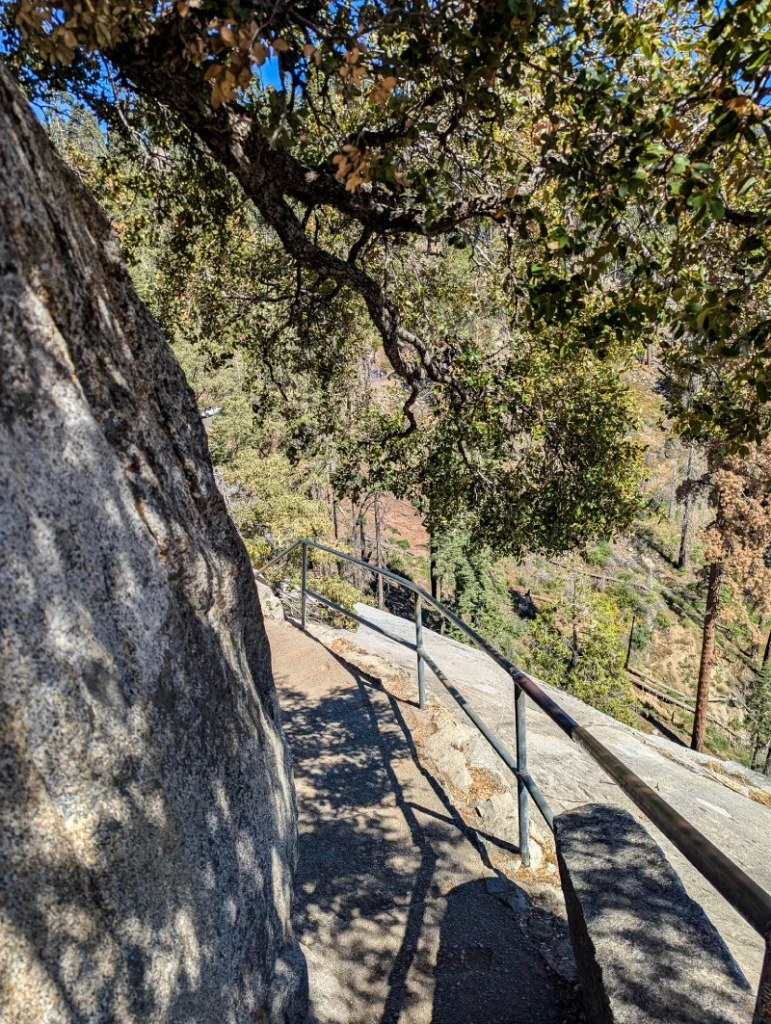
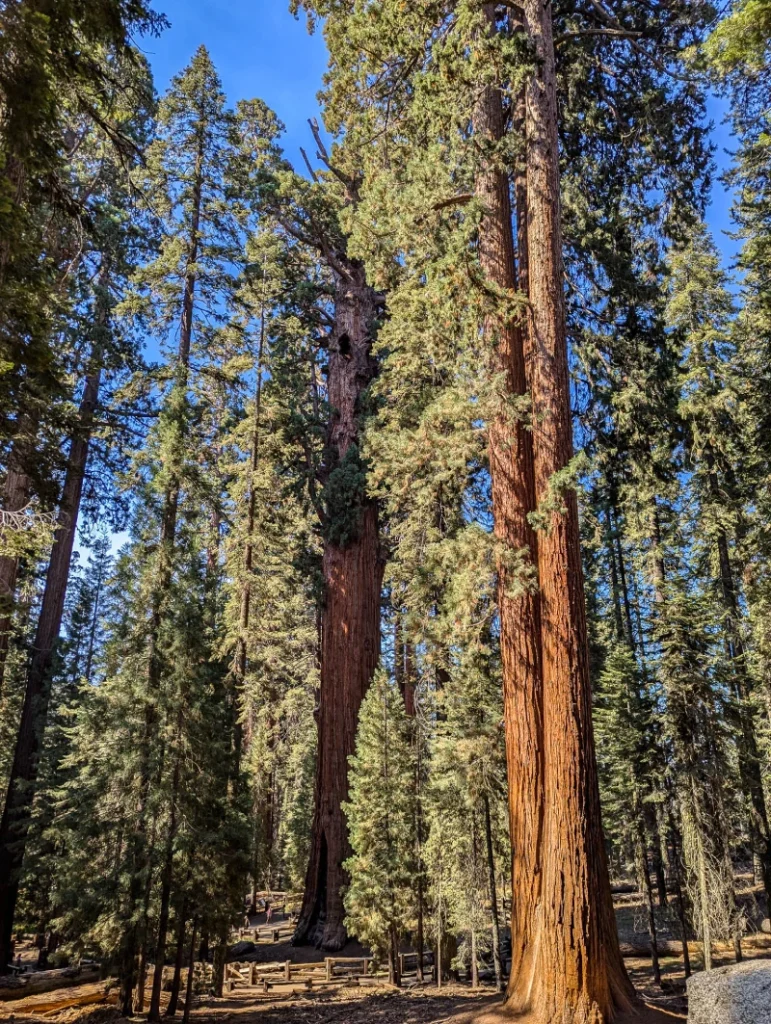
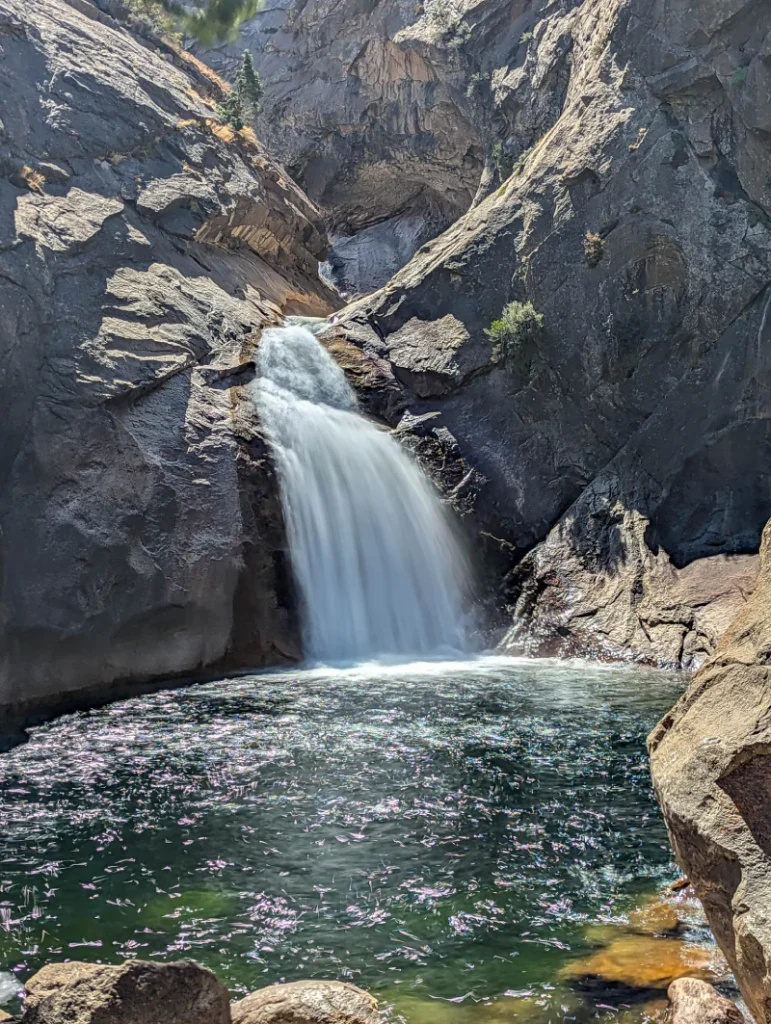
Entrance Fees and Passes
All USA National Parks require you to pay an entrance fee per vehicle. The private vehicle pass for Sequoia & Kings Canyon costs $35 and is valid for 7 consecutive days. If you are a frequent visitor, you can also purchase the Sequoia & Kings Canyon Annual Pass for $70, valid for 12 months, or the America the Beautiful Pass for $80, which gives you access to all U.S. national parks and federal recreation lands. Click here for all available passes and up-to-date information on entrance fees and costs.
Unlike some other California National Parks, you do not need a reservation to enter Sequoia & Kings Canyon. Simply pay the entrance fee at the gate or show your pass. If you plan to visit during peak summer weekends, arriving early is still recommended to secure parking.
Cell Service
Compared to some other national parks, Sequoia and Kings Canyon actually have a bit more cell service than I expected — and honestly, that was almost a little disappointing! One of the things I love most about visiting national parks is the chance to completely disconnect, and here you’ll still find spots with reception, especially near the main roads.
That said, service is far from consistent. Once you venture toward the wilderness areas, down into Kings Canyon, or along the more remote trails, coverage quickly drops off. Internet access is also limited mostly to lodges and visitor centers.
A few tips to prepare for your trip:
- Pick up a printed park map at the entrance
- Download offline maps ahead of time
- Carry a written list of your planned stops and trails
- Mark key places on your map for easy reference
Gentle Reminder: Even if you can get a signal in some areas, let the parks be your invitation to slow down, unplug, and enjoy the giant trees, canyons, and star-filled skies without distractions.
Lodging
If you can get a reservation to stay inside Sequoia or Kings Canyon, you absolutely should! It’s the best way to maximize your time in the parks and avoid long drives back and forth. Staying inside means waking up among the giant sequoias or falling asleep near the canyon rim — and more time exploring instead of sitting in the car.
Both parks have a mix of lodges, cabins, and campgrounds. Popular options like Wuksachi Lodge in Sequoia and John Muir Lodge in Kings Canyon book up quickly, especially in summer, so make reservations well in advance.
Gas
Have a full tank of gas before visiting Sequoia and Kings Canyon! There are no gas stations inside either park. The closest options are just outside the entrances — along Highway 198 in Three Rivers (about 5 miles from the Ash Mountain Entrance Station) and along Highway 180 in Dunlap (about 20 miles west of Grant Grove). While Hume Lake and Stony Creek Village do have stations, they are on national forest land and not within the parks themselves.
For electric vehicles, charging stations are available in the town of Three Rivers just outside the Sequoia entrance.
Food
Dining options inside Sequoia and Kings Canyon are very limited, so it is always smart to pack snacks and extra food. Still, you will find a few convenient spots.
In Sequoia, Wuksachi Lodge offers a full-service restaurant near the Giant Forest, and Lodgepole Market & Deli has quick bites and groceries. Over in Kings Canyon, Grant Grove Restaurant serves casual meals, while Cedar Grove Snack Bar (open seasonally) is handy when you’re deep in the canyon.
If you want more variety, nearby towns like Three Rivers (by Sequoia’s Ash Mountain entrance) and Dunlap (near Kings Canyon) have restaurants and grocery stores.
Things to See and Do in Sequoia National Park
Famous for its groves of massive sequoia trees, Sequoia National Park is where you will find iconic landmarks like the General Sherman Tree and Moro Rock. The park is very accessible, with plenty of short hikes, family-friendly loops, and scenic picnic areas that make it easy to enjoy the landscape without strenuous effort. Beyond the giants, you will also find wildflower-filled meadows, peaceful forest trails, and plenty of opportunities to spot wildlife:
- General Sherman Tree – See the largest tree in the world by volume, standing proudly in the Giant Forest.
- Moro Rock – Tackle the steep staircase up the granite dome for sweeping views of the Sierra Nevada.
- Big Trees Trail – A flat, family-friendly loop around Round Meadow surrounded by towering sequoias.
- Giant Forest Museum – Learn about the history, ecology, and preservation of these magnificent trees.
- Crescent Meadow – Known as the “Gem of the Sierra,” perfect for picnics, wildflowers, and spotting black bears in summer.
- Tunnel Log – Drive through a fallen sequoia tree for one of the park’s most iconic photo ops.
- Tokopah Falls Trail – A moderate hike along the Marble Fork of the Kaweah River leading to a stunning 1,200-foot waterfall.
- Crystal Cave – Explore marble caverns filled with stalactites and stalagmites (open late spring through fall).
- Lodgepole Visitor Center – A great stop for maps, ranger advice, and exhibits before exploring the trails nearby.
Things to See and Do in Kings Canyon National Park
While many visitors stick to Sequoia because it’s more easily accessible, those who venture into Kings Canyon are rewarded with dramatic granite cliffs, roaring rivers, peaceful meadows, and far fewer crowds. Driving the Kings Canyon Scenic Byway feels like uncovering a hidden wonder, leading you deep into one of the deepest canyons in North America. Whether you are after short family-friendly walks or rugged wilderness trails, Kings Canyon offers a sense of adventure and solitude that makes it truly unforgettable:
- General Grant Tree – Visit the second-largest tree in the world, also known as the Nation’s Christmas Tree.
- Kings Canyon Scenic Byway – Drive this winding 50-mile road for jaw-dropping views of granite cliffs, rivers, and deep canyon walls.
- Zumwalt Meadow – Take an easy loop trail through lush meadows with dramatic canyon backdrops — perfect for families.
- Roaring River Falls – A short, paved walk leads to a powerful waterfall plunging into a granite bowl.
- Grizzly Falls – Enjoy a quick stop at this 80-foot waterfall just steps from the road.
- Mist Falls Trail – A moderate hike with rewarding views of one of the park’s most impressive waterfalls.
- Cedar Grove – Explore the heart of Kings Canyon, with hiking trails, picnic spots, and access to the Kings River.
- Backcountry Adventures – For seasoned hikers, Kings Canyon offers some of the Sierra Nevada’s most remote wilderness trails and alpine lakes.
Visiting Sequoia and Kings Canyon National Parks is an experience that blends natural wonder with adventure. From standing beneath the largest trees on Earth to driving along one of the most scenic canyon roads in the country, these side-by-side parks offer something unforgettable for every type of traveler. Let us know in the comments below if you have already visited Sequoia and Kings Canyon National Parks?
You May Also Like

15 Best Things to Do in Carlsbad
October 23, 2024
LEGOLAND California Essential Tips for First Time Visitors
January 15, 2025

